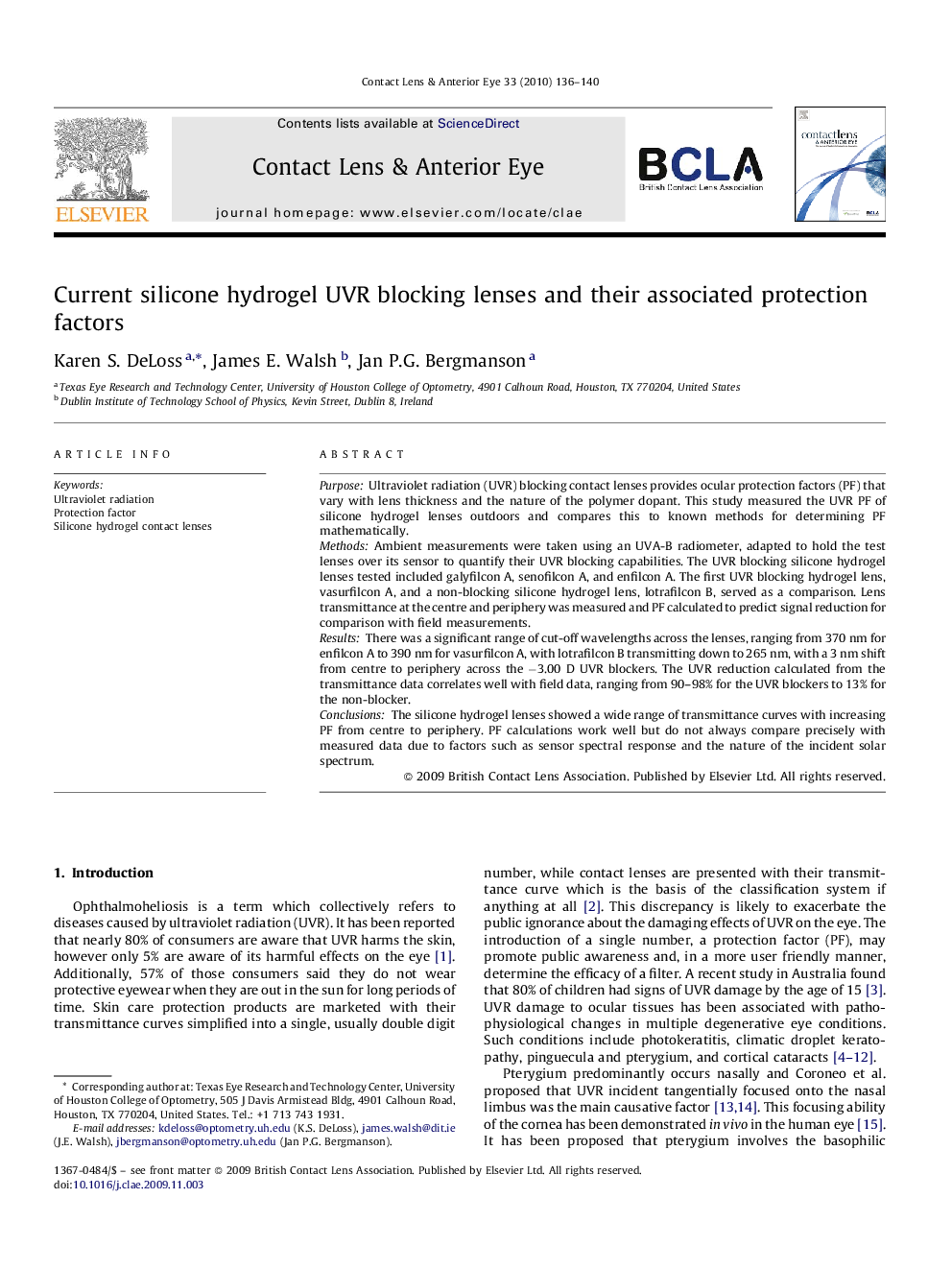| Article ID | Journal | Published Year | Pages | File Type |
|---|---|---|---|---|
| 2696830 | Contact Lens and Anterior Eye | 2010 | 5 Pages |
PurposeUltraviolet radiation (UVR) blocking contact lenses provides ocular protection factors (PF) that vary with lens thickness and the nature of the polymer dopant. This study measured the UVR PF of silicone hydrogel lenses outdoors and compares this to known methods for determining PF mathematically.MethodsAmbient measurements were taken using an UVA-B radiometer, adapted to hold the test lenses over its sensor to quantify their UVR blocking capabilities. The UVR blocking silicone hydrogel lenses tested included galyfilcon A, senofilcon A, and enfilcon A. The first UVR blocking hydrogel lens, vasurfilcon A, and a non-blocking silicone hydrogel lens, lotrafilcon B, served as a comparison. Lens transmittance at the centre and periphery was measured and PF calculated to predict signal reduction for comparison with field measurements.ResultsThere was a significant range of cut-off wavelengths across the lenses, ranging from 370 nm for enfilcon A to 390 nm for vasurfilcon A, with lotrafilcon B transmitting down to 265 nm, with a 3 nm shift from centre to periphery across the −3.00 D UVR blockers. The UVR reduction calculated from the transmittance data correlates well with field data, ranging from 90–98% for the UVR blockers to 13% for the non-blocker.ConclusionsThe silicone hydrogel lenses showed a wide range of transmittance curves with increasing PF from centre to periphery. PF calculations work well but do not always compare precisely with measured data due to factors such as sensor spectral response and the nature of the incident solar spectrum.
